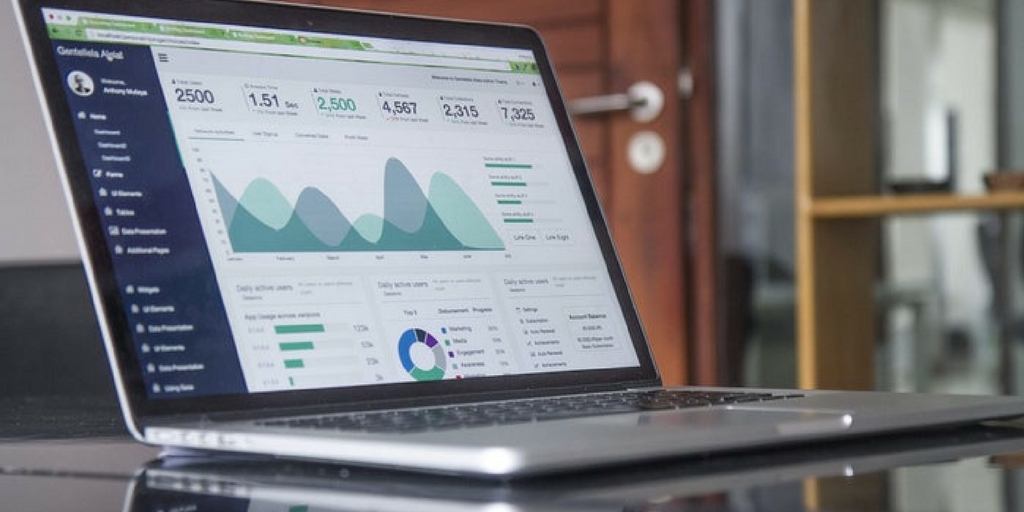
by Jennifer Hart Yim | Jul 30, 2018 | Blog, Content Marketing, Logistics, Marketing, Supply Chain, Talent
A new article discusses the way that automation, AI and big data are transforming the industry. It raises the alarm that supply chain management will soon cease to exist, only to assert that it will still exist, just in a very different form.
This guest post comes to us from Argentus Supply Chain Recruiting, a boutique recruitment firm specializing in Supply Chain Management and Procurement.
A new article in Harvard Business Review has been generating some automation-related controversy in the Supply Chain Community, as well as lots of buzz and interesting conversation. Naturally, we at Argentus want to weigh in. Titled, “The Death of Supply Chain Management,” the article discusses the way that automation, AI and big data are transforming the industry. It raises the alarm that the function will soon cease to exist, only to – as these “X is dead“ articles often end up doing – assert that it will still exist, just in a very different form.
Beyond the obviously clickbait headline – which we couldn’t help but indulge in ourselves – the article makes some fascinating predictions about the future of supply chains. But even more relevant to us at Argentus, it has some interesting forecasts about the future of supply chain talent in particular, in the coming world where automation is king.
Automation is one of the hotter topics in the supply chain community – as it is across the entire economy. As a major feature in McKinsey discusses, automation has already made a number of jobs in the field way less relevant, threatening to eliminate those jobs entirely. Many companies have already automated their front-line transactional purchasing activities. Automation has eliminated a number of blue-collar supply chain jobs in warehouses and distribution centres, and driverless trucks stand to transform the logistics field, eliminating the need for millions of truck drivers.
But many are alarmed that automation will replace white-collar workers as well. The HBR article talks about how more companies are automating functions like demand forecasting, which has long been seen as more of an “art” than an exact science. No longer.
In the authors’ words, “within 5-10 years, the supply chain function may be obsolete, replaced by a smoothly running, self-regulating utility that optimally manages end-to-end workflows and requires very little human intervention.”
[bctt tweet=”Automation through digital technology isn’t really just about lowering labour costs, it’s about creating huge opportunities for companies to dive deep into data and create end-to-end visibility into their own supply chains.” username=”Fronetics”]
Automation through digital technology isn’t really just about lowering labour costs, it’s about creating huge opportunities for companies to dive deep into data and create end-to-end visibility into their own supply chains. This kind of visibility opens up huge opportunities, not only by lowering risk but also by letting companies become more strategic.
The HBR article outlines an interesting development: more retail and manufacturing companies are adopting “digital control towers” for their supply chains. These companies have physical rooms staffed with dozens of data analysts working in real-time to identify and squash challenges.
Picture an airport control tower, but for supply chain management: staffed 24/7, full of large screens full of 3d graphical representations of potential bottlenecks and inventory shortfalls all the way from order to delivery. These control towers are full of systems that can automatically correct for various issues, and they’re increasingly considered to be core aspects of company operations.
The authors outline how mining company Rio Tinto is using robotic train operators, cameras, lasers, and tracking sensors to monitor and fully automate its supply chain from train to port.
But do these developments hearld the end of the need for skilled Supply Chain professionals? Of course not.
A highly-automated “digital control tower” needs responsive individuals with deep understanding of how to solve Supply Chain challenges. An automated mining supply chain deep in the jungle, monitored in another country still needs people to monitor it and respond to issues.
Maybe unsurprisingly, the HBR article ends up saying that Supply Chain people will always be in demand, but that skill needs are changing, and we agree. People need to re-skill, up-skill, and educational institutions need to make sure that they’re training people with skills for the future and not the past. In the short term, executives who can manage people doing repetitive tasks (like transactional purchasing) need to learn how to manage information flows for more highly-specialized workers. Further down the ladder, the highest-demand analysts will be those who can draw insights from an ever-expanding pool of data and communicate them to senior leadership. Companies will need specialists with deep understanding of both technology and operations to design and implement automated supply chains – even more than they already do.
But beyond the trends that the HBR article outlines, we think they’re missing a key element: even if automation progresses to affect white-collar workers, even if data automates functions like supply planning, logistics, and sourcing, the human element will always matter. Companies will always need people who can build relationships with vendors when conducting large-scale Procurement. They’ll always need people who can negotiate contracts and rates, people who have the emotional intelligence to understand the psychology of the person sitting on the other end of the table, and arrive at a deal that drives value.
Machines will get better at the tactics, but the strategy will always be human, at least until the robots take over the world completely. (Which we don’t think will happen, by the way).
In the 19th century, luddites protested the adoption of machines in the British textile industry, fearing that they’d be out of a job. And they were. But while opportunities for weaving by hand disappeared, employment didn’t: the industrial revolution pushed new skillsets to the fore, creating a demand for people to manage production – leading to today’s supply chain function, by the way – while raising overall wealth and standard of living in the process.
While the rise of AI, big data and workplace automation has some important differences, we think it’s a worthwhile analogy: as with then, these new technologies will shift the employment landscape and put the squeeze on individuals with transactional or blue-collar skillsets. But supply chain professionals who can up-skill themselves, and become masters of the interpersonal skills that will never go away, will have more opportunities than ever before.
Take it from a company that’s on the front-lines of hiring in Supply Chain: while automation eliminates jobs at the lower-skilled end of the spectrum, demand for high-skilled candidates is higher than ever before, and only rising. So is Supply Chain Management on death’s door?
Not so fast.
Related posts:


by Fronetics | Dec 11, 2017 | Big Data, Blog, Data/Analytics
Here are our most-viewed blog posts from 2017 about big data/analytics, including articles about using big data in supply chain/logistics and competitive benchmarking.
“Big data” has been a hot-button word in supply chain and logistics circles for several years now. But the concept of using big data to measure performance and improve operations is only gaining steam. We predict big data/analytics will be more important in 2018 and beyond.
This year, the Fronetics blog examined big data/analytics in a number of ways — both within the context of supply chain and logistics operations and using data and analytics to improve marketing performance. Here is a look at our most-viewed big data/analytics posts in 2017.
Top 5 big data/analytics posts
1) Top 10 Logistics Metrics to Measure Your Supply Chain Efficiency
The supply chain plays an integral part in maintaining a well-functioning organization. A well-structured and organized warehouse will help you achieve your distribution goals and adequately analyze metrics. That is why it is important to ensure you are measuring certain data points in your logistics operation to ensure efficiency. This guest post from Demetra Mallios of Catch-Up Logistics suggests which logistics metrics can help you identify issues in your warehouse before they become a problem. Read full post
2) 3 Tools to Help You Benchmark Marketing Performance against Your Competitors
To define success within your market and industry, you need to look outside what’s going on internally in your organization and compare yourself to your peers. That is why competitive benchmarking is so important. But running another set of reports and keeping track of all those metrics could be a full-time job within itself — and ain’t nobody got time for that. The good news is there are some really effective tools available for marketers to quickly, even automatically, benchmark their performance against the competition. Read full post
3) You Need to Benchmark Your Marketing Performance against Competitors
When it comes to measuring marketing performance, most marketers look inward, focusing on key performance indictors (KPIs) such as website traffic, open rates, social engagement metrics, and conversion rates. While these inward facing KPIs are important, it is also important to look at what is happening outside your organization and to benchmark your marketing performance against peers and competitors. This will give you the knowledge and drive you need to improve your performance and chance of success. It can help you to identify threats and strategic opportunities. Read full post
4) 11 Metrics to Measure in Last-Mile Logistics
This guest post from Adam Robinson of Cerasis examines the data shippers should be tracking to drive down the high cost of last-mile logistics. And, interestingly, Robinson does not believe that reduced costs must mean cutting customer service. In fact, he recommends integrating customer service data into delivery operations and transportation systems as a key step to increasing your brand’s value. Read full post
5) 3 Lessons from Big Data to Make Your Content More Relevant
Searchmetrics founder Marcus Tober discusses how data is changing the relevancy of content in his conference talk, Mastering the World of Deep Learning: How Big Data Is Making Content More Relevant in Search. As a pioneer in search-analytics software, Tober has watched search engines become more advanced at figuring out which web pages people will find relevant. Through years of research, Tober offers three lessons to make your content more relevant. Read full post
Runner-up posts:


by Fronetics | Nov 2, 2017 | Blog, Data/Analytics, Logistics, Strategy, Supply Chain
In a recent study, MIT found that companies that focus on 5 key initiatives to improve their supply chain analytics can have a big impact on their bottom line.
Some supply chain companies are leaning on the power of analytics to help streamline their processes and get ahead of their competitors. But many companies have struggled to embrace the relationship between using analytics and implementing changes that can improve business performance.
The study, published by the MIT Sloan Management Review, asked 353 participants to discuss their understanding of their companies’ analytics systems. The results showed that though most companies have an analytics system in place, very few are using the results to implement necessary changes.
Obstacles to fully utilizing analytics included inaccurate data, cost, and lack of timely data. But the benefits far outweigh the challenges. Hanesbrand Inc., for example, used predictive analytics to make changes in their inventory processes and have since seen an increase in their production and purchase orders.
So how can your company start to incorporate supply chain analytics into your company culture?
Here are 5 tips to help kick-start your analytics implementation:
1. Supply chain analytics initiatives need a top-down mandate
In order to achieve analytical success that has an influence over organizational process, it’s imperative that upper-level management use the analytical systems. Executives need to promote and utilize the systems. Buy-in from managers and team members will be seamless when it’s coming from the top. David Dittmann, director of business intelligence and analytics services at Procter & Gamble Co., stresses that “it is impossible to win over thousands of people one small analytics victory at a time. Analytics must be a top-down mandate to succeed from an organizational perspective.”
2. The simpler the model, the more likely the use
If you want your company to embrace an analytics system, it’s important that the model is simple and easy to grasp. If employees don’t understand how to use the analytics or apply the results, they won’t take the time to implement the system. The more complex a system is, the greater the potential for team members to dismiss it. The Cleo Integration Suite (CIS), for example, promotes itself as an easy-to-use platform that can integrate seamlessly into your pre-existing software. CIS understands that supply chain companies need systems that are elementary to incorporate to achieve results.
3. Business knowledge is essential
Executives in the survey noted that an in-depth understanding of business processes and their effect on the bottom line is critical to supply chain analytics success. To develop the most effective model, companies need to have insight into all of the processes that make their company successful and be able to incorporate the results into these processes. Without this foundational information, the analytics are just “fun facts.”
4. Trust in the numbers
Time is a key factor in successful analytics implementation. In order to achieve timely results, organizations have to trust in the numbers the analytics provides them. “Trust can be built through a closed-loop change management effort that is centered on performance metrics that accurately reflect the current state of the supply chain system.” writes Melissa R. Bowers, Adam G. Petrie, and Mary C. Holcomb. Once these metrics are in place, it is easy to gauge the results against past processes.
Coca-Cola Global implemented a check-and-balances system to cultivate trust in their analytics. Anytime an employee chose to override the analytics system, it gave them feedback to see if their manual adjustments resulted in an improvement or a setback, creating trust in the employees and their dependence on the data.
5. Implement mechanisms to help develop analytics professionals gain business knowledge
Many supply chain companies are hiring analytics professionals to help implement these systems into their organizations. Though experts in their field, it’s important for these trained analytics professionals to learn about all aspects of your business. This business knowledge creates an open relationship between the business and the analytics, creating more opportunities for the numbers to aid in the processes.
Out are the days of order tracking and point of sales data, and in are the days of big data and analytics. Supply chain companies are quickly realizing the need to understand and implement these analytics systems into their day-to-day processes. Creating efficiency and savings using these systems is easier than you think.
Related posts:


by Fronetics | Jan 14, 2016 | Big Data, Blog, Data/Analytics, Strategy, Supply Chain
 Fronetics Strategic Advisors is a leading management consulting firm. We advise and work with companies on their most critical issues and opportunities: strategy, marketing, organization, talent acquisition, performance management, and M&A support.
Fronetics Strategic Advisors is a leading management consulting firm. We advise and work with companies on their most critical issues and opportunities: strategy, marketing, organization, talent acquisition, performance management, and M&A support.
We’ve gathered our most-read big data articles of 2015:
With current technologies, there are increasing amounts of information to be gathered and exchanged in the world, creating more opportunities for businesses to harness that information and chart a course, or to tweak processes based on that information. According to an Accenture study, “97% of executives report having an understanding of how Big Data analytics can benefit their supply chain, but only 17% said that they have implemented it in at least one supply chain function.” Read the full article.
KPMG recently conducted a survey of 144 CFOs and CIOs with the objective of gaining a more concrete understanding of the opportunities and challenges that big data and analytics present. The survey found that 99% of respondents believe that data and analytics are at least somewhat important to their business strategies; and 69% consider them to be crucially or very important. Despite the perceived value of big data, 85% of respondents reported that they don’t know to analyze and interpret the data they already have in hand (much less what to do with forthcoming data). Read the full article.
Forget for a moment the potential of adopting big data analytics throughout the entire supply chain, and consider instead how big data can untangle and integrate seemingly unrelated masses of data to solve small problems in a warehouse or distribution center. That’s exactly what this company did. Read the full article.
Executives are eager to jump on the bandwagon, too. Although only 13% of 250 executives surveyed by Accenture said they use big data primarily for predictive purposes, as many as 88% indicated big data analytics is a top priority for their company. With an increasing number of companies learning to master the precursors to developing predictive models — namely, connecting, monitoring, and analyzing — we can safely assume the art of gleaning business intelligence from foresight will continue to grow. Read the full article.

by Fronetics | Sep 3, 2015 | Big Data, Blog, Data/Analytics, Logistics, Strategy, Supply Chain

Big data is, well, big. The term has gotten lots of buzz the past few years. But it’s big in other ways as well. According to McKinsey big data is defined as “datasets whose size is beyond the ability of typical database software tools to capture, store, manage, and analyze.” A 2014 Forbes article has 11 other helpful definitions.
With current technologies, there are increasing amounts of information to be gathered and exchanged in the world, creating more opportunities for businesses to harness that information and chart a course or tweak processes based on that information. According to an Accenture study, “97% of executives report having an understanding of how Big Data analytics can benefit their supply chain, but only 17% said that they have implemented it in at least one supply chain function.”
In a Boston Consulting Group article, Making Big Data Work: Supply Chain Management, the authors suggest three high-potential opportunities for supply chain management to take advantage of big data. Their suggestions help parse through the complicated, overwhelming network of big data. As they suggest, “with so much available data and so many improvable processes, it can be challenging for executives to determine where they should focus their limited time and resources.” Let’s have a look at the authors’ ideas, as gathered through research, on how to “increase asset uptime and expand throughout, engage in preventive maintenance of production assets and installed products, and conduct near real-time supply planning using dynamic data feeds from production sensors and the Internet of Things.”
Visualizing Delivery Routes
Big data, in the form of geoanalytics, can be used to better manage supply chain routes and help reduce transportation costs by 15-20%, especially when other partner companies are trying to coordinate deliveries. “The companies learned that they shared similar patterns of demand. Vehicle-routing software also enabled rapid scenario testing of dozens of route iterations and the development of individual routes for each truck. Scenario testing helped the companies discover as much as three hours of unused delivery capacity on typical routes after drivers had covered their assigned miles.” Real-time data from live traffic feeds, combined with past data helped to create new forecasts and eliminate wasted time.
Pinpointing Future Demand
In today’s volatile marketplace, relying on sales predictions can be risky and inaccurate, at best, a disaster at worst. According to the BCG article, advanced languages can now work together to create a most accurate forecast, freeing up sales people and their precious time to combat other issues and convert leads. “Advanced analytical techniques can be used to integrate data from a number of systems that speak different languages—for example, enterprise resource planning, pricing, and competitive-intelligence systems—to allow managers a view of things they couldn’t see in the past.”
Simplifying Distribution Networks
The European consumer goods company profiled in the BCG article, used advanced analytics to downsize from 80 factories across 10 countries, down to 20 factories. The distribution network shrunk, and efficiency and savings increased, the latter by 8%. Working with big data can help examine a diverse amount of information never before analyzed. Taking complex data and knowing how to handle the data can turn complexity into simplicity.
Marcelo Simiao, Lean Manager— Operations at Munters, seems to concur with the findings, and believes big data can make sweeping changes.
“Companies are struggling with today’s greater demand volatility. The Order-to-Delivery processes have been the focus of many improvement projects and lean initiatives that aim to reduce costs and improve response times. But most of today’s organizations have their supply chain functions fragmented into several different departments, creating process improvement projects that have results limited to the data they have at hand. This approach often doesn’t deliver value to the end customer. Big Data is changing this scenario by integrating the voice of the customer, sales and the entire supply chain. This integration and thorough data analysis allows organizations to align all of their focus on key projects that are not limited by functions, will improve customer satisfaction, and deliver results directly into the company’s bottom line.”







